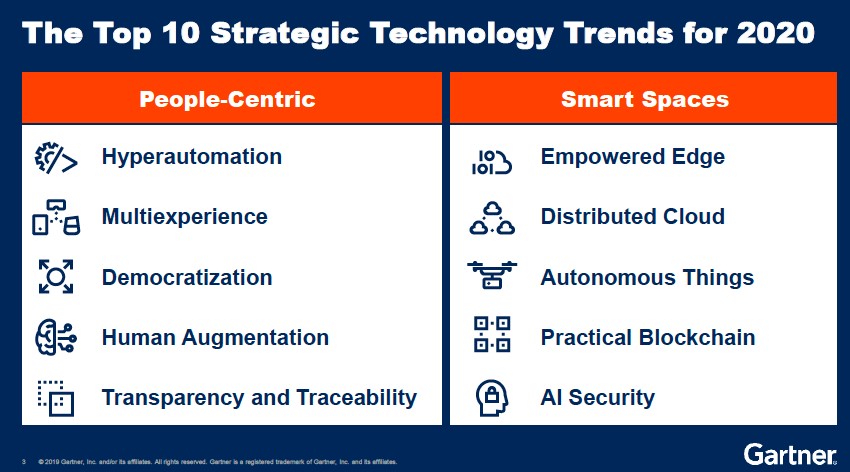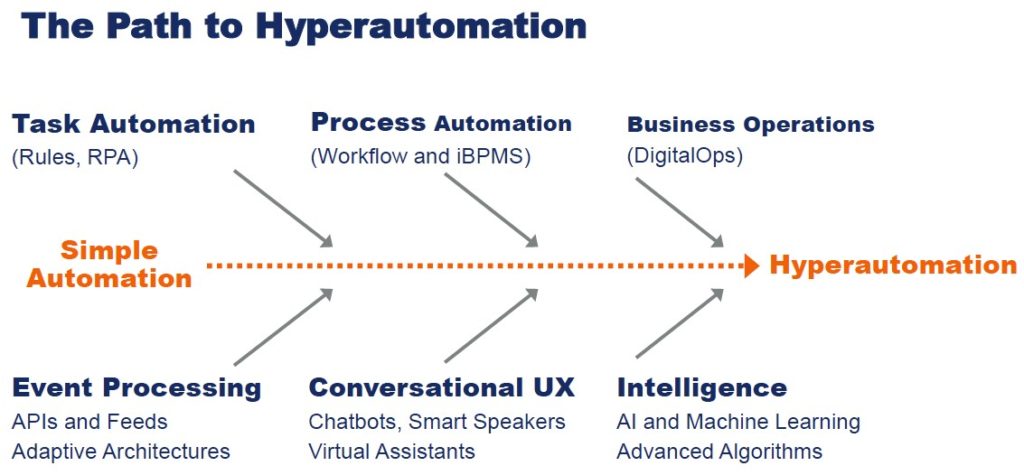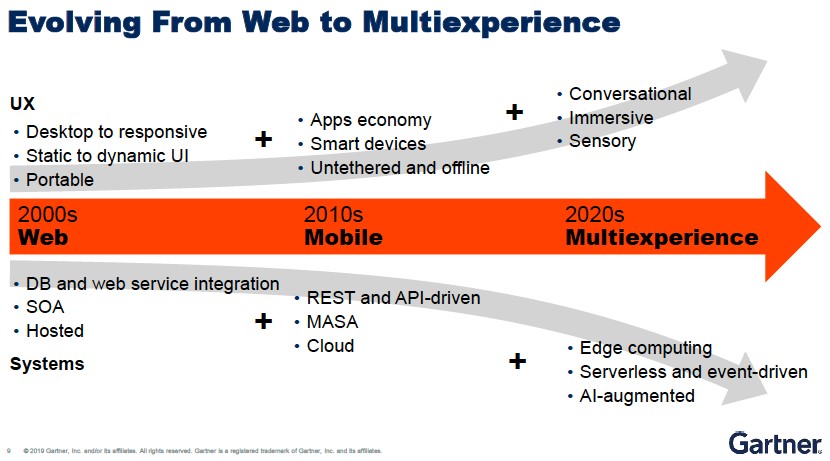Gartner, the world’s leading IT advisory firm, held a series of conferences around the world in October and November to talk about trends and recommendations. I had the pleasure of attending Gartner’s IT Symposium/Xpo conference along with 9,000 other CIOs and IT leaders who came to hear Gartner’s latest thinking around technology, leadership, and digital transformation. Not surprisingly, event-driven architecture is seen as a key to enabling the technology trends that Gartner identified for 2020.
Two years ago, Gartner identified event-driven architecture as a top tech trend for 20181 and predicted that:
- By 2022, event notifications will form part of over 60% of new digital business solutions.
- By 2022, over 50% of business organizations will participate in event-driven digital business ecosystems.
- By 2022, 50% of organizations managing APIs will incorporate mediation of event notifications into their operations.
- By 2022, most leading providers of application platforms will include high-productivity tools for event-driven design.
While those predictions might seem overly optimistic now, the top technology trends named by Gartner at this year’s symposium do offer some encouragement they might still prove out.
Gartner’s Predictions for 2020
One of the more popular sessions at this year’s event is the Top 10 Strategic Technology Trends session. Gartner predicted what technology trends will be the most influential in the coming 12 months – or at least which technologies CIOs need to better understand and address strategically within their given organizations.
Gartner’s top 10 technology trends for 2020 centered around two themes: People-Centric and Smart Spaces. The identified trends were as follows:

Source: Gartner “The Top 10 Strategic Technology Trends for 2020”, presented by David Cearley at Symposium/Xpo, Oct 21 2019
So where does event-driven architecture fit in according to Gartner? Where it actually plays a role in 2020 is as an enabling technology for the first two trends of “hyperautomation” and “multiexperience.”
Hyperautomation is about automating anything that can be automated. For example, the #1 use case for artificial intelligence according to Gartner is process automation. On the path to hyperautomation is a spectrum of technologies from RPA to AI. Event processing via APIs and event-driven architecture is seen as an underlying technology that will help underpin our march towards hyperautomation.

Source: Gartner “The Top 10 Strategic Technology Trends for 2020”, presented by David Cearley at IT Symposium/Xpo, Oct 21 2019
Similarly, multiexperience is the idea that multi-experience development platforms to support mobile, web, conversational and augmented reality will change the way we perceive and interact with systems. Think of user experience models such as voice, eye-tracking, gestures, emotions, or other non-traditional engagement methods. Gartner predicts that by 2021, at least one third of enterprises will have deployed such multiexperience platforms. Evolving from our current web and mobile-centric experience models requires a continuum of conversational, sensory, and immersive UI technologies. The technologies to underpin these trends include edge computing, augmented AI, serverless, and event-driven technology.

Source: Gartner “The Top 10 Strategic Technology Trends for 2020”, presented by David Cearley at IT Symposium/Xpo, Oct 21 2019
In conclusion, two of the People-Centric trends that Gartner identifies as top strategic technology trends in 2020 will be underpinned by event-driven architecture. This makes sense given our world is inherently event driven; as people we react to the world around us and often take action based on what we sense.
As enterprises evolve to become more responsive to the environments around them, they will need to adapt their IT systems. In hindsight, I guess 2022 isn’t as far away as one might think.
Read Gartner’s Research Report, The 5 Steps Towards Pervasive Event-Driven Architecture, to learn more about the benefits and best practices for adopting event-driven design. And check out our blog about how we’re helping enterprises make event-driven architecture pervasive.
1 Gartner “Top 10 Strategic Technology Trends for 2018: Event-Driven Model“, 8 March 2018, David Cearley, Yefim Natis, Mike Walker, Brian Burke)
Explore other posts from category: Business

 Roger Sabourin
Roger Sabourin
